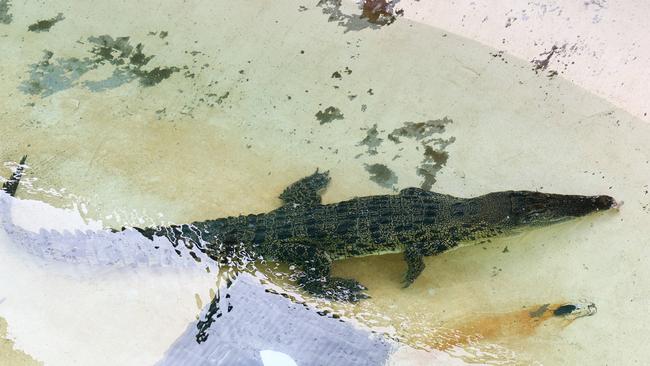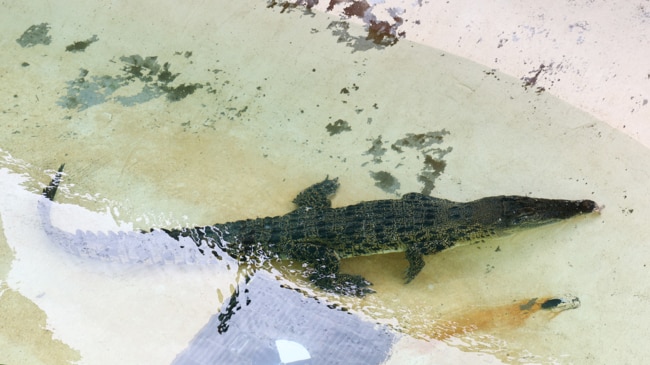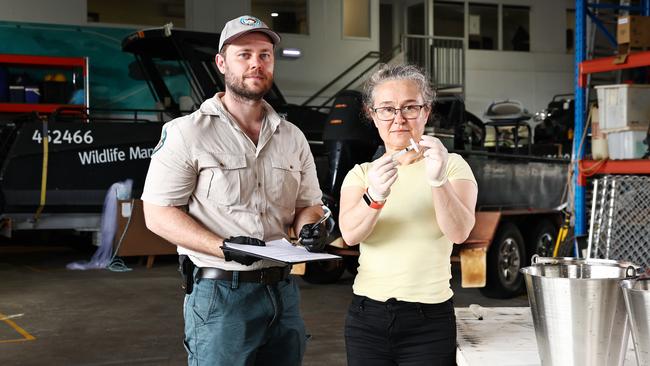Environmental DNA trial begins in Cairns to detect Far North crocs
Research has started in Cairns to develop a test that detects the presence of saltwater crocodiles from telltale traces of environmental DNA in the water of Queensland rivers.

Cairns
Don't miss out on the headlines from Cairns. Followed categories will be added to My News.
Research has kicked off in Cairns to develop a test that detects the presence of saltwater crocodiles from telltale traces of environmental DNA (eDNA).
But don’t expect a portable croc detection kit to be available for sale at your local BCF store anytime soon.
University of Canberra researchers Dr Elise Furlan and Dr Peta Hill, in partnership with the Department of Environment, Science and Innovation, have just spent an intensive period at a Portsmith ranger base testing water of a holding pond that contains a 2.5m croc.
In the early stages, the goal of the study is to detect the presence of saltwater crocodiles in Far North river systems by interpreting an analysed water sample.

DESI northern wildlife research program co-ordinator Simon Booth said the emerging science of eDNA had been looked at by researchers in the Northern Territory but the Queensland study was more extensive and aimed to broaden the crocodile sample base.
“At this stage, we’re looking at it as a pilot project working through the steps of captive trials (moving into) field trials later this year,” he said.
“Certainly the intent as far as managing crocodiles is another tool in the toolbox for us.
“So where we have crocodiles that may enter a water body or be quite cryptic and hard to find, we can actually use this to take a water sample and actually confirm the presence or recent presence of a crocodile.”

Under scientific conditions water is collected from the croc holding pond using sterilised stainless steel buckets after an exact water level is set.
Researchers then strain the croc water through a pill filter which is baked in a special oven to evaporate off the water.
The solid residue left is then tested for crocodile DNA to confirm or deny an animal’s presence.
It’s a labour intensive process that takes up to two weeks to get results at this stage, but Dr Hill said the technique could accurately detect croc faecal matter and urine in tiny quantities.
“We’re aiming to determine how soon after the animal enters a known body of water, we can detect its DNA,” postdoctorate research fellow Dr Hill said.
“We haven’t done the degradation trials before so we’re not quite sure what to expect in that regard.

“The DNA may persist for quite some time, it may start to degrade really rapidly (and) often that can depend on environmental variables.”
The trial aims to support visual sightings of crocodiles reported to DESI in a long-term goal to equip rangers with a tool to confirm the animal’s presence that could then inform the setting of traps if the animal needs to be targeted for removal.
“It’s really exciting,” Dr Hill said.
“It just adds another piece of the puzzle (and) is another tool that we can use to monitor and to evaluate where these animals are and what they’re doing and how they’re moving.”
The ultimate goal of the trial is to develop a fast riverside test to confirm if the waterway has a croc in it, but this was a “number of years” away, Dr Hill said.
More Coverage
Originally published as Environmental DNA trial begins in Cairns to detect Far North crocs




